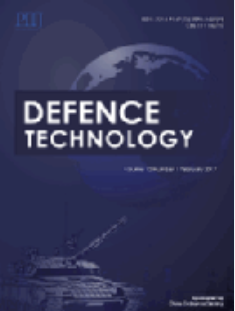Flow field distribution and overpressure characteristics inside the crew compartment of a truck-mounted howitzer under the effect of muzzle blast
IF 5
Q1 ENGINEERING, MULTIDISCIPLINARY
引用次数: 0
Abstract
The muzzle blast overpressure induces disturbances in the flow field inside the crew compartment (FFICC) of a truck-mounted howitzer during the artillery firing. This overpressure is the primary factor preventing personnel from firing artillery within the cab. To investigate the overpressure characteristics of the FFICC, a foreign trade equipment model was used as the research object, and a numerical model was established to analyze the propagation of muzzle blast from the muzzle to the interior of the crew compartment under extreme firing condition. For comparative verification, the muzzle blast experiment included overpressure data from both the flow field outside the crew compartment (FFOCC) and the FFICC, as well as the acceleration data of the crew compartment structure (Str-CC). The research findings demonstrate that the overpressure–time curves of the FFICC exhibit multi-peak characteristics, while the pressure wave shows no significant discontinuity. The enclosed nature of the cab hinders the dissipation of pressure wave energy within the FFICC, leading to sustained high-amplitude overpressure. The frame-skin structure helps attenuate the impact of muzzle blast on the FFICC. Conversely, local high overpressure caused by the convex or concave features of the cab's exterior significantly amplifies the overpressure amplitude within the FFICC.
炮口爆炸作用下车载榴弹炮乘员舱内流场分布及超压特性研究
炮口爆炸超压引起了车载榴弹炮乘员舱内流场的扰动。这种超压是阻止人员在驾驶室内发射火炮的主要因素。为了研究FFICC的超压特性,以外贸设备模型为研究对象,建立数值模型,分析了在极端射击条件下炮口冲击波从炮口向乘员舱内部传播的过程。为了进行对比验证,炮口爆炸实验包括了乘员舱外流场(FFOCC)和FFICC的超压数据,以及乘员舱结构(Str-CC)的加速度数据。研究结果表明:FFICC超压-时间曲线呈现多峰特征,压力波无明显间断;驾驶室的封闭特性阻碍了压力波能量在FFICC内的耗散,导致持续的高振幅超压。框架-蒙皮结构有助于减弱炮口冲击波对FFICC的冲击。相反,由驾驶室外部凹凸特征引起的局部高超压显著放大了FFICC内的超压幅值。
本文章由计算机程序翻译,如有差异,请以英文原文为准。
求助全文
约1分钟内获得全文
求助全文
来源期刊

Defence Technology(防务技术)
Mechanical Engineering, Control and Systems Engineering, Industrial and Manufacturing Engineering
CiteScore
8.70
自引率
0.00%
发文量
728
审稿时长
25 days
期刊介绍:
Defence Technology, a peer reviewed journal, is published monthly and aims to become the best international academic exchange platform for the research related to defence technology. It publishes original research papers having direct bearing on defence, with a balanced coverage on analytical, experimental, numerical simulation and applied investigations. It covers various disciplines of science, technology and engineering.
 求助内容:
求助内容: 应助结果提醒方式:
应助结果提醒方式:


